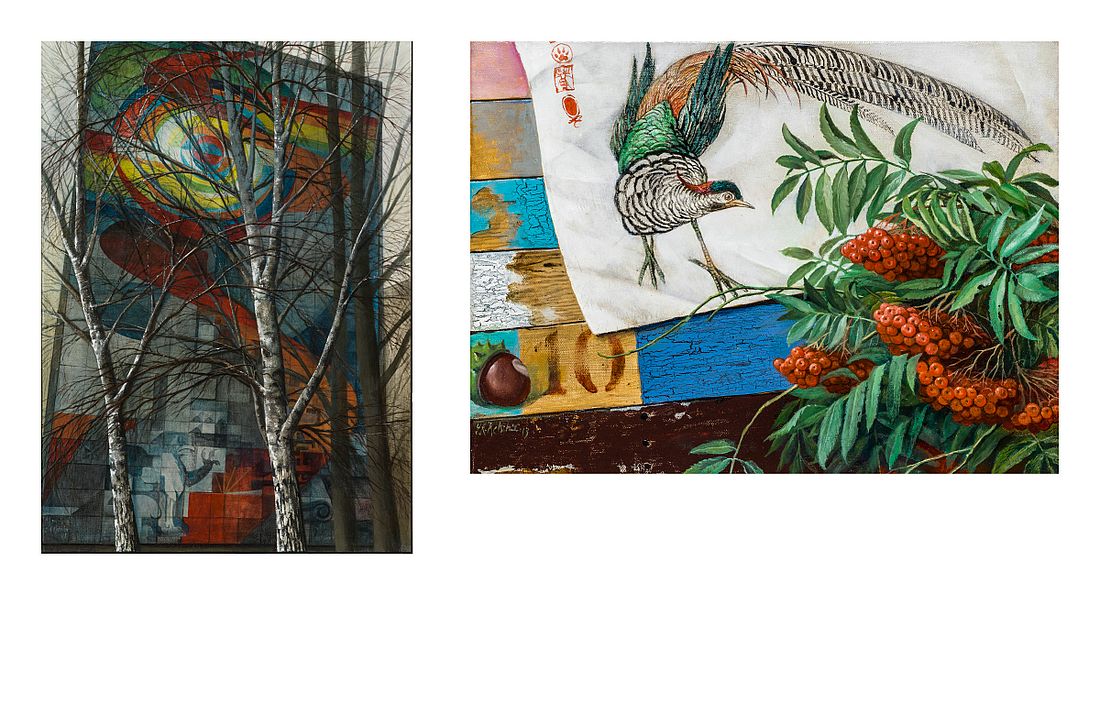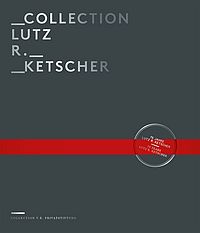THE ARTIST LUTZ R. KETSCHER
BOOK LUTZ KETSCHER




“THE PROMOTION OF ANY UNDERTAKING BEGINS IN ONE‘S FANTASY.”
A R E F L E C T I O N
“The promotion of any undertaking begins in one’s fantasy.” – according to the American journalist, gold digger and store owner Prentice Mulford (1834–1891).
Our fantasy is always oriented multi-dimensionally; it connects different eras and spaces and thus finds new possibilities of movement and systems of relationships with a consistently playfully appearing ease. It designs new worlds of imagination, quotes things already known in the process, and brings us closer to the grand fascination of the unknown.
This creative force has to be fostered, animated by the new over and over again — at best by “creative professionals,” by artists. In his artistic work, Lutz Ketscher, born in 1942, has been interested in this persistent mobility of the human power of imagination in a quite special way.
Deeply rooted in classical culture and yet always dynamically oriented towards the present and future, his pictorial compositions present themselves as narrative worlds to be read again and again as new, so to
speak, invariably surprising in their intricacy and yet very consequently constructed out from the respective single elements.
Designed in a stupendous, pictorial-graphic technique, a wide panorama with diversely entwined, pictorial combinations is spread out by the artist: to be found therein, among other things, are “speaking” persons and objects, frequently cited only rudimentarily, stage-like spatial entities and many dreamlike constellations that repeatedly change anew in the mind of the observer and elicit new stories.
As a graduate of the Academy of Fine Arts Leipzig, Lutz Ketscher possesses a comprehensive artistic education that is also exemplary from a purely artisanal point of view. However, not only has the excellence of the pictorial design techniques been a special concern, but also the complex pictorial formulation of a concomitance of highly diverse reality systems. He very consequently pursued a path thereafter, which led him to ever further-reaching pictorial narratives — and not least established a very special circle of friends of his art.
Only a few works emerge from the artist’s studio each year; they are sought-after witnesses of a very special artistic compositional strength, an artistic fantasy on the basis of an extensive cultural reflection of our living present with its many different art-historical sources.
“Fantasy is an eternal spring”—this quote attributed to Friedrich von Schiller once again points to the steadily stimulating youthful freshness of our fantastical worlds, particularly when they are shaped by a masterful artistic hand.

Autor: Mag. Dr. Peter Assmann
Director of the Complesso Museale di Palazzo Ducale di Mantova

80 YEARS OF LUTZ R. KETSCHER
Together with Lutz R. Ketscher, his wife Karin and his daughter Antonia, a team is working on the artistic processing of the work, so that a cohesive overall picture emerges. The occasion could not be more fitting: 80 years of Lutz R. Ketscher! The beginning is the presentation of an art cassette with high quality reproductions of selected works of the Lutz R. Ketscher Collection, which is aimed at a chosen circle of specialists, experts and interested persons. Lutz R. Ketscher, born on May 13, 1942 in Gera, studied at the Academy of Visual Arts Leipzig. He is an important representative of the famous Leipzig School and has lived and worked since 1989 in Hof (Bavaria) and Schwarzenbach on the Saale, respectively.
















LEIPZIG SCHOOL
Today, the “Leipzig School” is generally understood to mean the “New Leipzig School”. This creates a reference, but also a demarcation, to the “Old Leipzig School”. This was minted at the documenta 6 in which the artists Bernhard Heisig, Wolfgang Mattheuer und Werner Tübke took part. Their students, for example Sighard Gille and Arno Rink, are considered the second generation of this “School”. In the third generation, their students are referred to as the “New Leipzig School”. This term was rather coined for marketing purposes. It includes artists who work very differently, such as Tilo Baumgärtel, Peter Busch, Tim Eitel, Katharina Immekus, martin Kobe, Rosa Loy, Christoph Ruckhäberle, David Schnell or Matthias Weischer. What they all have in common, however, is the search for a new visual language with features of Expressionism and New Objectivity in an often combined representation of objective and abstract motifs that create a strong melancholy mood.
Even if the artists don’t like to be forced into this category and therefore defend themselves against any labeling, it cannot be denied that this summary under a catchy catchphrase increased the market value of their works enormously.
The “Leipzig Baumwollspinnerei” has been the center for numerous artists and galleries since 2005.
Perhaps the best-known artist of the “New Leipzig School” is Neo Rauch. Basically, however, he is a trailblazer for the artist colleagues mentioned above.
Neo Rauch is a strongly polarising painter. He has enormous success, which, however, is considered by many to be unjustified.
Like Neo Rauch, Gerhard Richter and Lutz Ketscher are also considered to be representatives of the “Leipzig School”. However, each of them work in a completely independent way.
Lutz Ketscher studied from 1960 to 1965 at the Leipzig University of Graphics and Book Art, amongst others with Bernhard Heisig and Wolfgang Mattheuer. Both were co-founders of the “Lepizig School”.
Lutz Ketscher is a representative of fantastic realism: de.wikipedia.org/wiki/Lutz_R._Ketscher
His works are based on classical roots, but they point in their multilayeredness from the present to the future..
For more Information please contact Fr. Iris Stadler (+43 650 7733208 )
IMPRINT
Concept & Text
Karl Frauscher
www.pixxers.com
Design
agentur kest
www.kest.net
Photography
Nik Fleischmann
www.foto-fleischmann.at
Production
Buchbinderei Strandl
www.strandl.eu
Web
Wolfgang Bartl
www.proseco.at
Domaininhaber und verantwortlich für den Webauftritt
V.K Privatstiftung
Schüttelstraße 55
A-1020 Wien
+43 650 7733208
office@vkprivatstiftung.at
FN:203092s

